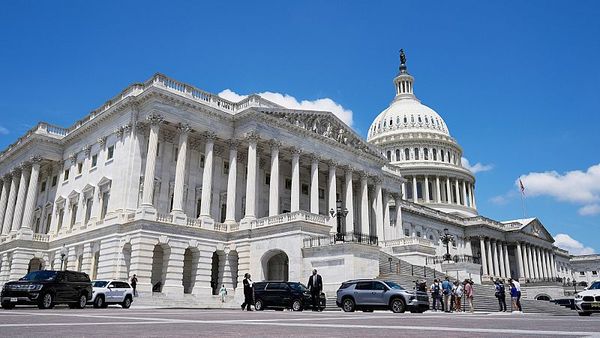"We can get away with this, we really can. I really believe that people need to do what they're asked to do. There's still time. It [ICU capacity] will be under pressure but we will not be overwhelmed and the ghastly scenarios we've seen in other countries need not apply here." - Dr Andrew Stapleton
What shape are New Zealand's 20 district health boards heading into potentially the greatest strain on their resources with a Covid-19 outbreak? Each of the 20 boards has a unique age demographic and health care system. How many hospital beds do they have? How many intensive care beds? How many infections could they handle? How many people over 80 years - at which point Covid-19 death rate spikes - do they have? Tom Dillane and Chris Knox crunch the numbers.
The state of NZ's DHBs
As of February 25, the Ministry of Health reported just 173 total ICU beds nationally.
This was scraped up to a total of 233 including their high dependency care beds and cardiac care unit beds, with respirators.
Here's the breakdown per DHB:
However, this number is fluid, explains Dr Andrew Stapleton, chairman of the NZ College of Intensive Care Medicine and member of the Anzics Covid-19 working group.
"The 170 number came from the ministry ringing everyone one day a few weeks ago and saying 'how many beds have you got today?'"Stapleton said.
"That number goes up and down depending on what day of the week - because we deliberately have more staffed ICU beds during the week.
"And then we stop doing that at the weekend when there aren't elective surgeries. There are times when there are nursing shortages.
"You've only got as many ICU beds as you've got nurses, so that number does vary from 170-odd to 220-odd - which is probably the more authentic number when we're fully staffed."
/arc-anglerfish-syd-prod-nzme.s3.amazonaws.com/public/NQUGMOFLP5GFZNLNITEEDTLQ5E.jpg)
On March 20, an updated Ministry of Health stocktake found a maximum of 563 ICU beds in the country's hospitals.
This in theory, involves repurposing 231 further beds in occupation therapy wards and emergency departments.
Another 99 beds could also come from high dependency units and gastroenterology units.
The breakdown of which hospitals and DHBs have these potential extra beds will be released this week, Stapleton said.
The Herald has analysed the age demographics, Covid-19 infection rates based on age, and hospital bed numbers and ICU numbers of DHB regions.
We have used the same infection and hospitalisation rates as cited in the series of modelling reports the University of Otago has produced for the Ministry of Health over March.
The ICU bed requirements cited in this article are based on the University of Otago estimate that 4 per cent of those who display Covid-19 symptoms will likely require an ICU bed.
We must stay under approximately 24,000 Covid-19 infections at any one time to make sure we do not max-out our 500-odd ICU beds.
It should be noted that the numbers are conservative, because they represent boards' ICU and bed capacity on a single day.
A Covid-19 patient admitted to ICU typically stays 15 days, meaning the system will get even more stressed if new cases continue at their current daily rate, and the lockdown does not flatten the curve.
/arc-anglerfish-syd-prod-nzme.s3.amazonaws.com/public/SKO47XBWX5H2HKZR3RH2CQQM6I.jpg)
Below are four scenarios on how Covid-19 infections could track within the New Zealand population.
It includes a best-case scenario, which the University of Otago study doesn't even entertain, but which the Government and some intensive care doctors are optimistic of.
The remaining three scenarios broadly summarise the University of Otago's March modelling of the strain New Zealand's health system and ICU capacity could face over the next year.
Scenario 1: We'll be fine and within current capacity.
No DHBs will reach their ICU threshold under this scenario: 0.025 per cent of the population is infected at once, equating to 1200 Covid-19 positive cases and 24 ICU beds.
The March 25 lockdown of New Zealand aimed to have every Kiwi currently infected with Covid-19 infect zero other people from then on.
They will infect those in their bubble, but those people will also infect no one else - theoretically stopping any further spread after they have recovered over a fortnight in isolation.
Without isolation restrictions, people infected with Covid-19 infect three other people on average.
As of today, New Zealand had 950 confirmed and probable Covid-19 cases, which hospitals can handle within existing capacity.
New Zealand's College of Intensive Care Medicine chairman Dr Andrew Stapleton says if Kiwis comply with level 4 restrictions 1000-2000 infections are the "best case scenario".
"If in the next three weeks we have more than 3000-4000 patients we're going to struggle in ICU even with extension plans. But if those numbers come over time, flatten the curve, then we can cope," he said.
"Social media amplifies the horror of the worst-case scenario and it's very easy to forget the vast majority, 99.5 per cent of patients under the age of 70 will get better and be just fine and, even better, they'll be immune in the future from Covid."
But we won't know if the lockdown is working for a couple of weeks, Stapleton said.
"Every three to five days we're likely to double [cases] because of the community spread that we assume is already occurring," he said.
"In about nine to 12 days we will see what happens next and if everyone stays at home the virus can't spread.
"I think the best case scenario will be 1000 cases. If everyone complies with the lockdown maybe 2000 cases and then we should see it level off pretty sharply after that.
"That's been the experience of other countries who've imposed strict lockdowns.
"We can get away with this, we really can. I really believe that people need to do what they're asked to do. There's still time. It [ICU capacity] will be under pressure but we will not be overwhelmed and the ghastly scenarios we've seen in other countries need not apply here."
30 per cent of the population gets infected. Peak day will be 7000 cases in week 47 after the virus was confirmed in NZ, , requiring 280 ICU beds.
Our health system as it is structured right now would be over capacity.
But if this were to come at the end of the year, as projected in the University of Otago study, we would likely have the 563 makeshift beds DHBs say they'd need.
New Zealand has 233 ICU beds and a 30 per cent infection rate would require roughly 280 ICU beds on the worst day.
But 80 to 90 per cent of those beds are in use on a normal day.
Although elective surgery is being delayed to provide for Covid-19 patients, at least half of New Zealand's existing 233 ICU beds will still be occupied by non Covid-19 patients.
"So that quickly shows you we don't have much additional capacity," Stapleton says.
Far fewer cars on the roads during the lockdown will also relieve ICU.
"The fact that people are staying at home also means they are not crashing their cars," Stapleton said.
"So things that are not happening will reduce pressure on ICU beds."
But all 20 DHBs have enough beds for Kiwis simply needing to be hospitalised for Covid-19.
But among most at risk for regional capacity would be West Coast and Wairarapa, which have no ICU beds.
/arc-anglerfish-syd-prod-nzme.s3.amazonaws.com/public/TRMXV4UAKFEWTIVVXNF65XEGYU.jpg)
West Coast DHB general manager Philip Wheble said they have been setting up an isolation unit at Grey Base Hospital specifically for COVID-19 patients.
West Coast DHB can also transfer patients to Canterbury.
New Zealand's first death from Covid-19 happened in a West Coast DHB hospital.
Anne Guenole, 73, died a day after testing positive for Covid-19.
She had been admitted to Grey Base Hospital in Greymouth on March 25 with suspected influenza.
Wairarapa DHB chief executive Dale Oliff said although the board does not have an ICU, it has beds in its High Dependency Unit and can stabilise patients for transfer elsewhere.
According to the Australia and New Zealand Intensive Care Society, including private ICUs in the data, New Zealand lags well behind world ICU standards, and the capacity has been falling.
Between 2011 and 2018, the number of ICU beds per 100,000 people declined from 5.98 to 5.14 in New Zealand, whereas in Australia they increased from 8.50 to 8.92.
In Europe the average is about 11.5, and Germany has close to 30.
Italy, where more than 11,000 have died from Covid-19, has 12.5 ICU beds per 100,000 people.
A drastic restructure of the health system to cope, 53 per cent of NZ's population get infected over the course of Covid-19 spread. Peak day will be 22,000 Covid-19 cases in week 27 after the virus was confirmed in NZ, 860 ICU beds needed.
Although this scenario would exceed New Zealand improvised maximum of 563 beds, by week 27, just after mid-year, the DHBs may have increased their capacity again.
Covid-19 patients would need 800-900 beds, not to mention beds for other ill or injured patients.
Patients would likely have to move around the country.
Every DHB would have exceeded their normal ICU capacity and would be using the improvised ICU beds.
Stapleton admitted there is concern about the varying ICU capacities of the DHBs but a plan to fly patients elsewhere is in place - drafted by his colleague Dr Alex Psirides.







